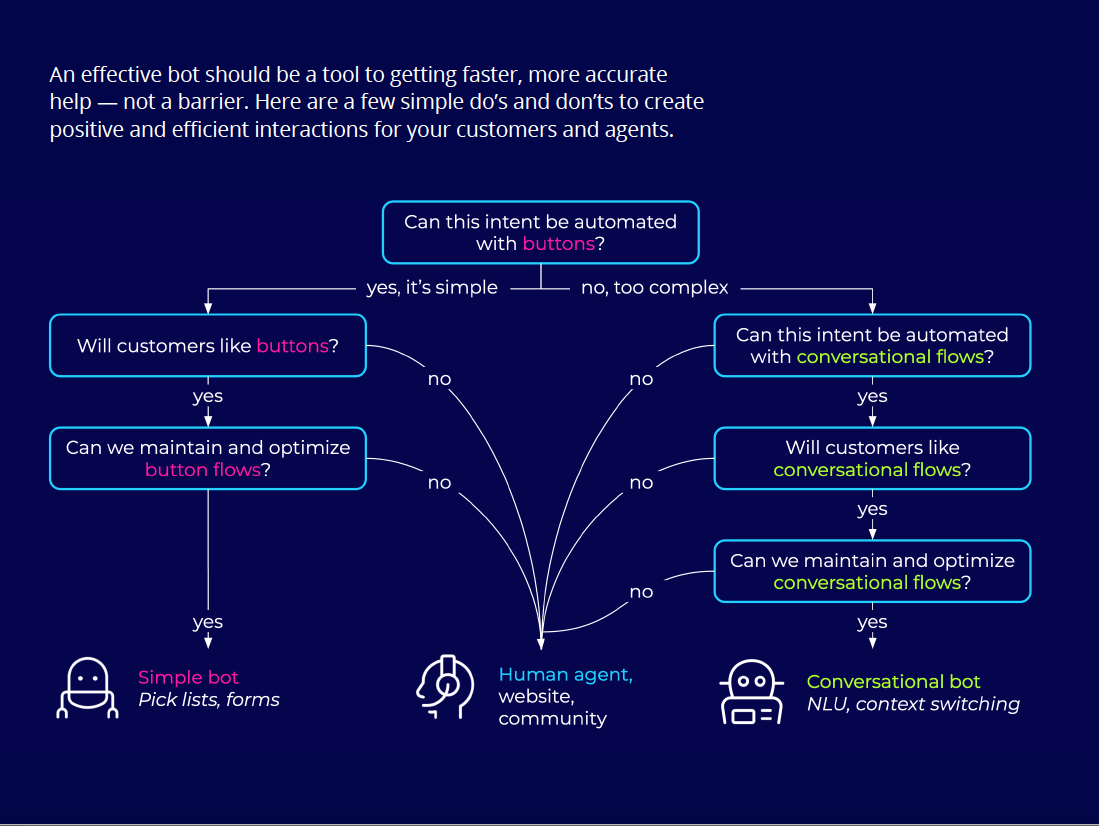Chatbots are one of the biggest innovations in the marketing industry but in order to use them effectively, brands must carefully consider the customer journey and how they implement this technology. Mike Betzer outlines the dos and don’ts so your brand can make the most of bots.
Off the top of your head, can you name the one greatest advantage that every single marketer has in their arsenal? It’s that every marketer is also a customer, so they know exactly what it’s like to be marketed to, and can appreciate very easily when it’s done well – and when it’s not.
But how often do marketers forget that knowledge when it comes to embracing the exciting and innovative developments in the marketing space? Marketers are an innovative group, often embracing the latest and greatest technology to make sure every advantage is grasped. Sometimes though, when it comes to tech, that old adage holds true: just because we can doesn’t always mean that we should.
Consider the chatbot.
If you know anything at all about the history of this innovative marketing tool, you may well be aware it’s not that new. ELIZA, considered the mother of all chatbots, was developed by MIT engineers over 50 years ago. Of course, the technology has evolved profoundly since then. Developments over the last few years have enabled bots to appear more human than ever before and, equally importantly, to be more adept at dealing with human conversations.
Brands now have opportunities to create interfaces that feel genuinely human and interact with customers and prospects in a manner that feels more personal and responsive.
But just because you can…
Before you jump straight to implementing chatbots in your digital marketing strategy, think back to the times when you’ve come across them yourself as a customer, and at what point in your journey were they used. What was your first impression? Research has found that 65 percent of customers believe chatbots are slower and less accurate than human agents – and perception is everything. Brands that rely on bots too much and use them at inappropriate times will see an ensuing effect on customer satisfaction (CSAT), leading to negative impacts on revenue, retention and reputation. However, even though two-thirds of your potential customers think less of chatbots than of human agents, more than half say they don’t really care if they interact with a human or a machine – the only important thing is getting the answer they’re after.
BOT(tle) it
Used wisely, a bot can ensure your customers get more help, more accurately and more quickly. So how do you know when and where is the best time to use this particular tool?
To decide which is appropriate – a human agent, plain button bot or fully conversational bot – ask yourself the three following simple questions:
- Is this a conversation that can be automated with buttons?
- Will customers react favourably to it? (i.e. would you react favourably as a customer?)
- Will it be straightforward to maintain?
Dos and don’ts
Once you’ve determined that a bot is not only an appropriate tool for your brand or organisation, but also suitable for a particular stage of the customer journey, the next step is to think very carefully about how you implement it. The following list of dos and don’ts will point you in the right direction:
Do
Welcome users and set expectations – just as the salesperson at a shop counter or receptionist in an office sets the tone for customer expectations, the chatbot may well be the first point of contact a user has with you and your brand. Make sure they are greeted accordingly, but also let them know what they can expect – what kinds of queries or issues the bot can help them with and, importantly, how much time this will take.
Make the most of rich messaging channels – WhatsApp, Apple Business Chat, Facebook Messenger and their ilk allow you to deliver images, links, videos, catalogues and more – and these are all ways to make the chatbot’s conversation so much more than a simple text only affair and, consequently, more engaging. Pair your chatbot with a scalable conversation management platform that can support agents as well as bots in any channel that customers find convenient.
Mix up the buttons and natural language – buttons are a natural fit for quick and easy decisions, common interactions or yes/no queries – but they can also become tedious. Blending them with judiciously placed natural language results in a much better customer experience.
Make switching to a human agent easy – nothing infuriates a customer more than getting caught in a vicious circle when the AI cannot answer their query, but sends them back to the beginning of the process time and time again.
Ensure that there are buttons that will reach human agents and carefully identify any common phrases customers may use when they want to talk to a person. Then ensure that transfers or handoffs between agent and bot are seamless and intuitive.
Don’ts
Bite off more than you can chew – always keep your unique business model in mind and create flows that support the most often reiterated interactions you have with your customers. This also means considering what your team can handle and throttling your systems up and down as necessary to avoid overwhelming capacity and delivering a poor customer experience.
Try to pretend your chatbot is a human – customers hate being taken for fools. Even the 29 percent of people who say they sometimes can’t tell whether they’re interacting with a person or a bot will respond much more positively if their expectations and understanding of the bot’s limitations are made clear from the start.
Set and forget – we already know how far bot technology has come since ELIZA debuted in 1966, and as with any piece of technology, bots continue to evolve. More importantly, so do your business and the desires of your customers. Stay up-to-date not just on the latest technological developments, but also on customer sentiment, to make sure you’re meeting their needs (without them having to ask you over and over again).
Offer too much choice or blanket text walls – these can be surefire ways to frustrate users. Keep your bot’s responses swift, relevant and easy to navigate.
Overdo the length of a button-based flow – this may be tempting, but customer requirements can often fall outside of preconceived options and a limited set of choices is a pathway to irritation.
Rely solely on a bot – if more than half of your customers are happy to interact with a bot as long as they get the assistance they require, that still means nearly half prefer not to use them at all. Conversations shouldn’t always be automated, and it’s vital that you plan for the unexpected and incorporate fall-backs and detection methods for any possible dissatisfaction.
This article first appeared in www.marketingmag.com.au





